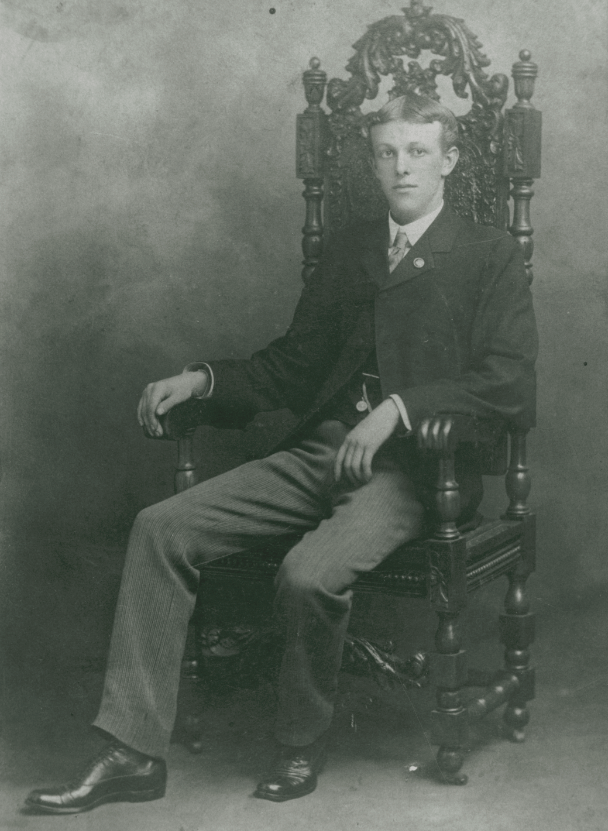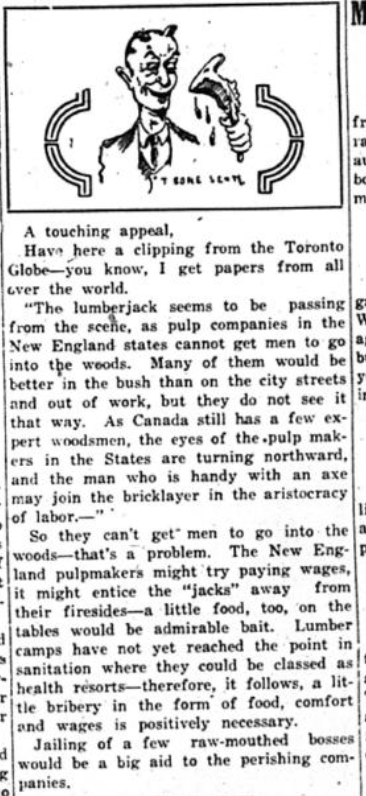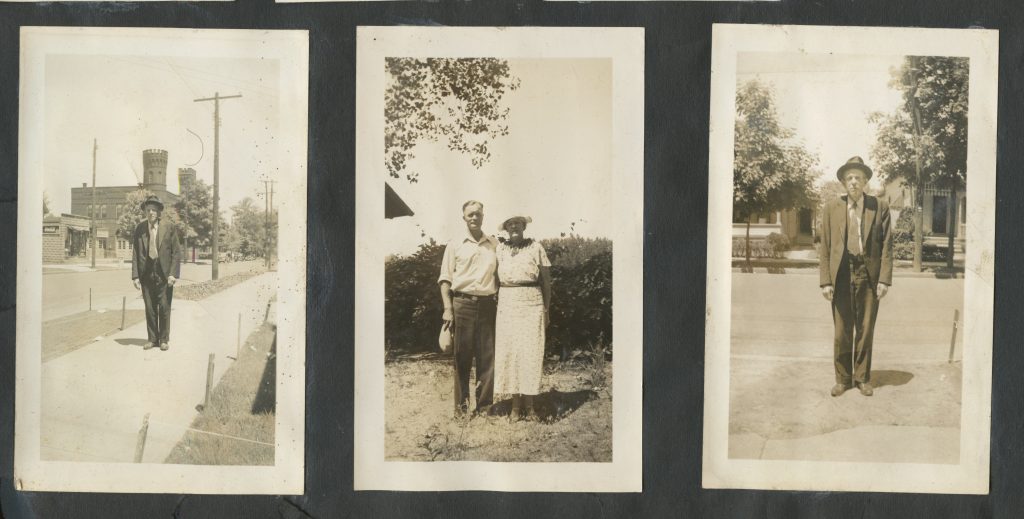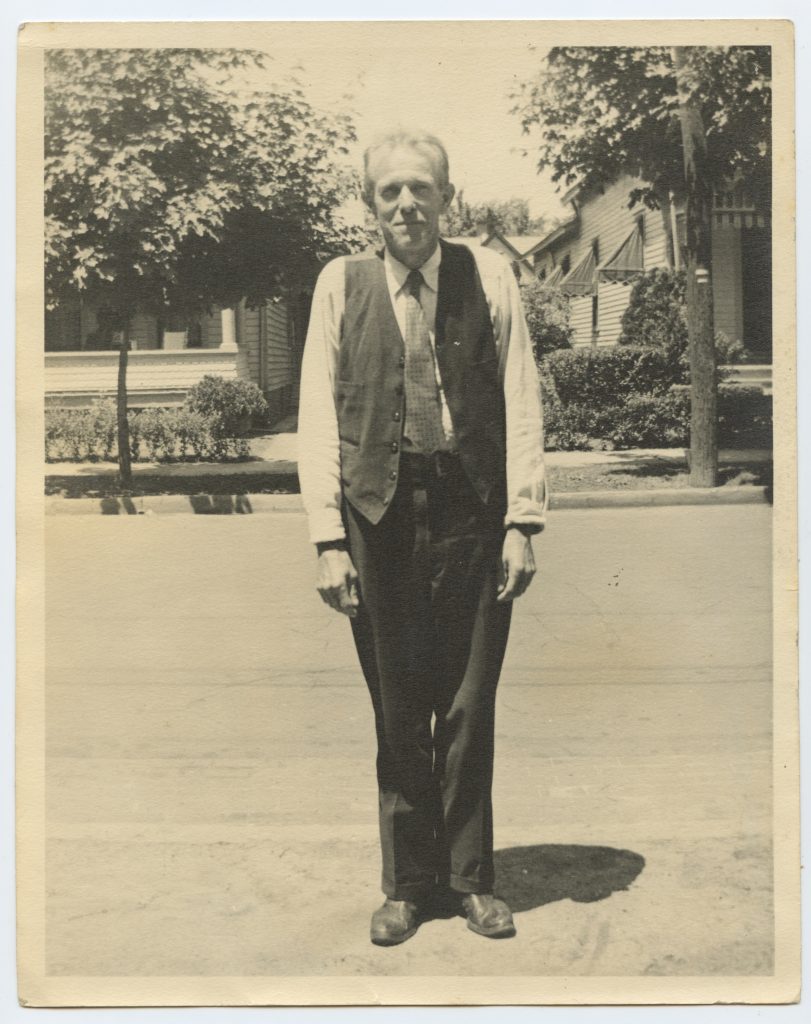
Matti Valentinpoika Huhta, better known under his pseudonym T-Bone Slim, was born in Ashtabula Harbor, Ohio (US.) on 14 February 1882. This is why his second name was “Valentininpoika”, “Valentin’s son”. His parents, Matti Huhta and Johanna Huhtaketo were Finnish immigrants from Kälviä, Ostrobothnia. At the turn of the century the family moved to Erie, Pennsylvania with Matti Valentininpoika and his four siblings: Ida, Alfred, John, and Sofie.
In Erie Matti Huhta married to Rosa Kotila, who was an immigrant from Ostrobothnia. They had four children: Paul, Edna, Anna, and Florence. Matti Huhta worked at the docks . In his early 30s Matti Huhta became politically more active and left his family to become a hobo.

Hobo Life and Networks
Matti Huhta became a legendary hobo, songwriter, poet, and columnist in the periodicals of the IWW (Industrial Workers of the World). He became T-Bone Slim. The IWW (Industrial Workers of the World) was T-Bone Slim’s most important network. IWW print culture was connected with vibrant musical and oral culture. His texts echo the figure of the hobo, who clings to his freedom and his right to self-determination. T-Bone Slim inspired other hoboes with his writing and lived as a vagabond for twenty years. He became one of the most seminal figures in the US Labor movement

The poetics of the “Wobblies” (as IWW members were called) and their history – art and experience, document, and archives – has been at the core of the invention of the revolutionary and rebel press, inspired by American poets such as Walt Whitman. The media space created by the so-called radical press, contrasted to mainstream ‘capitalist’ press, reflected the concerns of immigrant labor, and social movements in the United States in the early 20th century.
The Industrial Workers of the World publications and “Wobbly” papers especially reflected the contemporary culture of protest. Most of the IWW publications were in languages other than English. The Finns were among the strongest groups in IWW, and published several IWW newspapers in Finnish: Finnish Tie Vapauteen monthly from Chicago and Industrialisti, the only daily newspapers of IWW, were published in Duluth, issued in 7,000 and 16,000 copies respectively.
Another important network was Matti Huhta’s family and the immigrant communities in which he grew up. Genealogists and local historians in Kokkola region (Marko Leppänen, Jukka Tuohino, Outi Järvi, Rainer Smedman) have worked on the family histories in different communities in Central Ostrobothnia, and an immigration history project of the area has been launched. Our research provides new insight regarding Matti Huhta’s family background. The oral tradition of Kälviä, preserved at Finnish Literature Society archives, has features of black and sometimes absurd humor which are typical to T Bone Slim’s texts. Ashtabula Harbor and Erie had very lively Finnish communities, depicted in Kalle Potti’s novel Iloinen harbori (1925) and in John Kolehmainen’s historical work.

We are curious to study more the influence of T-Bone Slim had on the labor movement. By tracing the life and networks of T-Bone Slim, and contextualizing him within the social, cultural, and political movements he operated within, we gain important, new insights on the frictions, boundaries and alternative possibilities in working class migrant communities.
Legacy

The body of Matt Huhta was found drowned in the Hudson river in May of 1942. The cause of death was listed as “Asphyxia by submersion- circumstances undetermined.” Little to no investigation was conducted, and he was buried in a pauper’s grave in potters field on Hart Island in NYC.
T-Bone Slim’s writings went on to inspire the Chicago surrealist movement and the Civil Rights movement in the 1960s. However, he stayed out of the limelight and his identity remained as a mystery for most of his readers.
Today T-Bone Slim’s texts and legacy lives on in the music of John Westmoreland, whose great grandmother’s older brother was T-Bone Slim. Also, Finnish music group Laulava Unioni performs old Finnish-American IWW songs from the beginning of the last century, including T-Bone Slim’s texts translated in Finnish.

Resurrection – (song)
Man that once drank at a bar
Hard by a churchyard gray
When evening shadows fell bizarre
He staggered on his way…
Right thru the graveyards ghostly air
His soul moved on in waves
Among the dim gray headstones there
He waved among the graves.Grave-diggers there had sunk a hole
For those that can’t behaveAnd when our hero onward stole
He stepped into the graveAnd there he slept in peace profound
Till after break of day
And crumbling sand did there abound
upon his mortal clay.In stark surprise he rubbed his eyes
And said, in mournful tone;
Don’t other corpses deign to rise
But mine alone, alone?The bar keep thought it was a joke,
Straight from the church yard-bed,
And failed to understand the soak
Was risen from the dead.